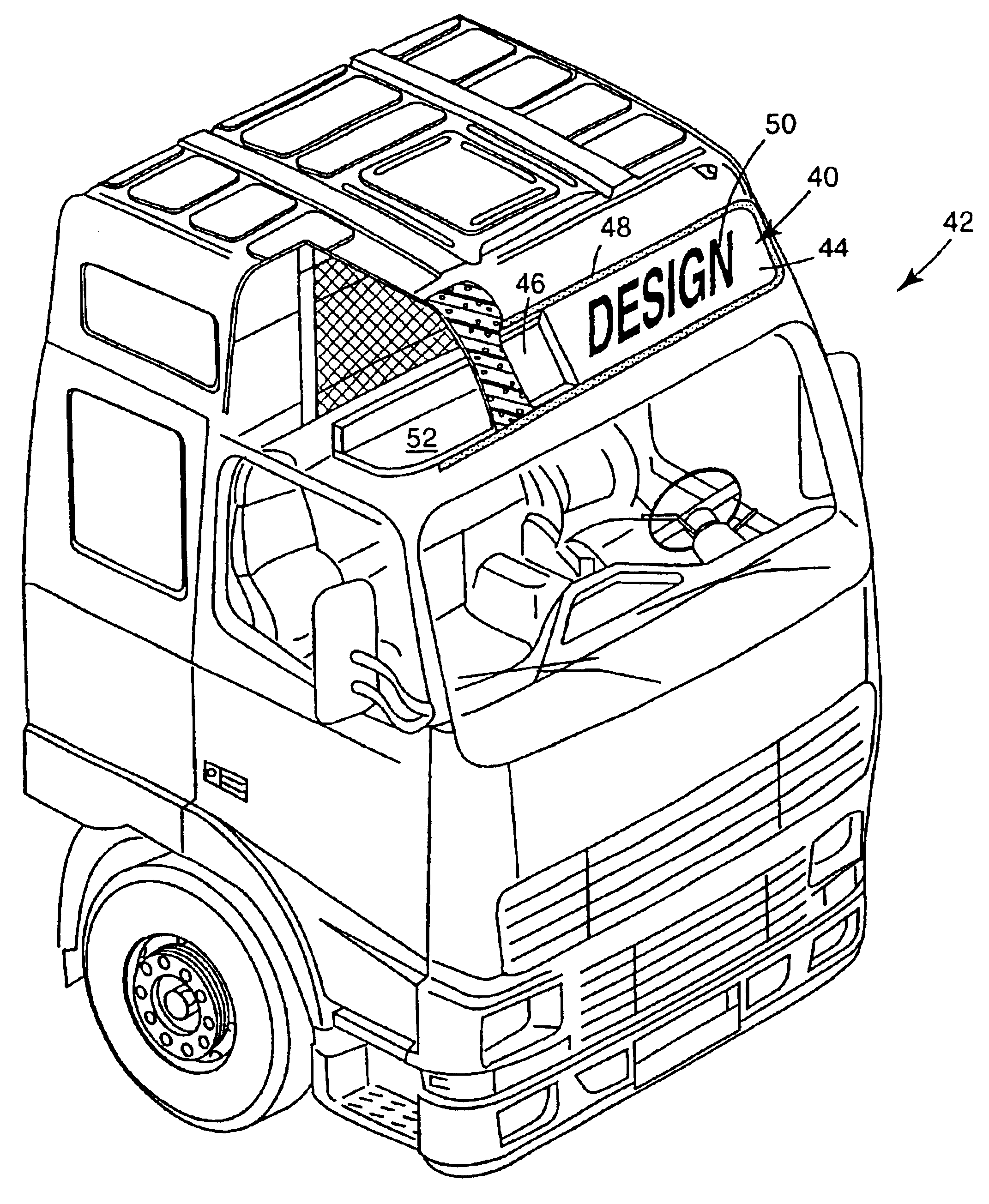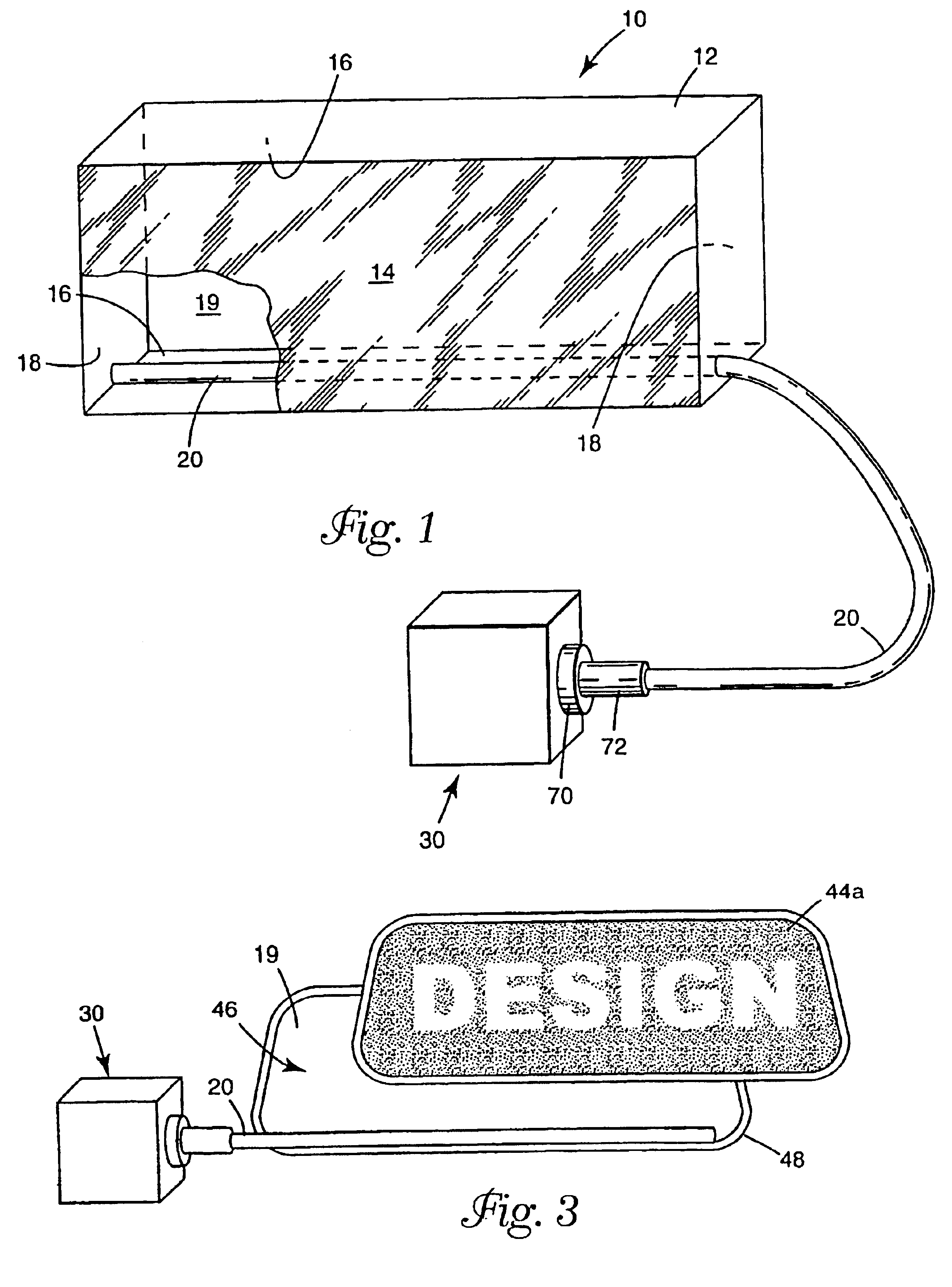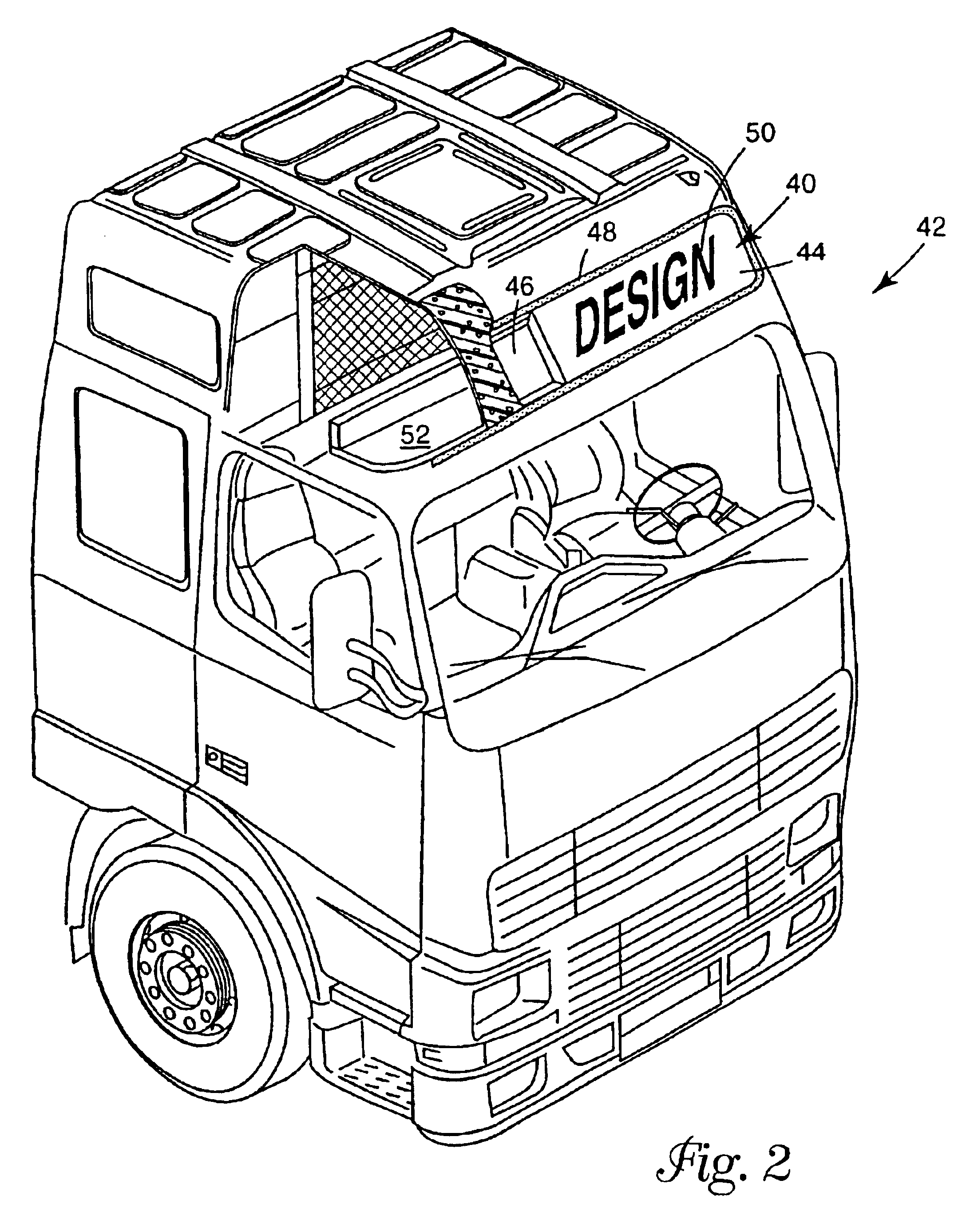Shallow depth back lit illuminated signage
a backlit, illuminated technology, applied in the direction of point-like light sources, vehicle seats, spectral modifiers, etc., can solve the problems of significant power consumption, significant power consumption, and the inability to accurately reflect light, so as to improve luminance uniformity and improve luminance uniformity. , the effect of significant power reduction
- Summary
- Abstract
- Description
- Claims
- Application Information
AI Technical Summary
Benefits of technology
Problems solved by technology
Method used
Image
Examples
example 1
The initial prototype was developed for laboratory measurements to reduce the concept to practice. It was constructed by bending standard aluminum sheet metal into a rectangular box 16".times.79".times.2". The 5 metal box sides were lined with a pressure sensitive adhesive (psa) backed TIPS film. The sign face was constructed from TiO.sub.2 titanium dioxide loaded 6.4 mm PMMA poly(methyl methacrylate) sheet stock with a diffuse reflectivity of approximately 60%. The sign illumination was created using a side extraction light fiber and a remote light source. The fiber consisted of a 12 mm diameter light fiber core manufactured by 3M. A 1 mm wide stripe of TiO.sub.2 vinyl film with pressure sensitive adhesive (Scotchcal.TM. Film, manufactured by 3M company, St. Paul, Minn.) was applied to the length of the fiber to provide side extraction. The fiber was then covered by a heat shrinkable fluoropolymer cladding (made by Zeus Industrial Products Inc., Raritan, N.J.).
The prepared fiber wa...
example 2
The second prototype sign box was made by Elektrovakuum AS, Ostfold, Norway in Norway and shipped to 3M in St. Paul. The sign box was press formed using standard TiO.sub.2 PMMA with an average diffuse reflectance of approximately 60%. The box was molded to fit the shape of a Volvo H3 model heavy truck glass sign face. Approximate box interior dimensions were 190 cm.times.40 cm.times.4 cm. The pressformed box made by Elektrovakuum was an experimental part, not standard manufacture.
The back and sides of the box interior were lined with TIPS, (the same film described in Example 1). Example 2 was constructed using the same light fiber as used in Example 1. A 2.25 m fiber with vinyl tape white Scotchcal M manufactured by 3M Company, St. Paul Minn. extraction was placed along the lower edge of the back half of the sign box. The extraction stripe was positioned to direct side emitting light upward, across the film lined box surface. A hole was cut on the side of the box near the lower edge...
example 3
Example 3 was constructed using the back half of the sign box described in Example 2. The standard frosted glass of a Volvo H3 model truck sign was used as the sign face and box lid. Again the box was lined with diffuse reflective film. The film used for Example 3 was a TiO.sub.2 loaded vinyl film with an average reflectivity of 95%, product number VS8480 produced by 3M.
PUM
 Login to View More
Login to View More Abstract
Description
Claims
Application Information
 Login to View More
Login to View More - R&D
- Intellectual Property
- Life Sciences
- Materials
- Tech Scout
- Unparalleled Data Quality
- Higher Quality Content
- 60% Fewer Hallucinations
Browse by: Latest US Patents, China's latest patents, Technical Efficacy Thesaurus, Application Domain, Technology Topic, Popular Technical Reports.
© 2025 PatSnap. All rights reserved.Legal|Privacy policy|Modern Slavery Act Transparency Statement|Sitemap|About US| Contact US: help@patsnap.com



